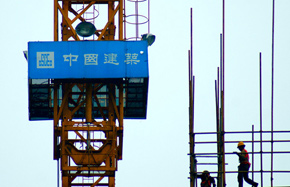ExxonMobil launches oil-change vehicles for wind turbines
ExxonMobil has launched a new oil-change vehicle for wind turbines that can be used in mountain roads, small areas and wind farms in China's southern regions.
The company said the oil-change vehicles, introduced at the recent China Wind Power Exhibition in Beijing, are part of ExxonMobil's plans to expand coverage of Mobil wind turbine services in China and in line with wind farms in the country moving to the southern and eastern regions, said Ng Wei Fang, deputy general manager of Exxon-Mobil China Investment Co Ltd.
China's wind power development has till now been mostly confined to the northern regions, whereas the government plans to accelerate onshore wind energy resources in the mid-eastern and southern parts of the country over the next few years, with newly installed and connected capacity reaching more than 42 million kilowatts by 2020 in these regions.
As part of the 13th Five-Year Plan (2016-20) for wind power development, the total cumulative installed electricity generation capacity from wind power is expected to reach 210 million kW by 2020.
Eyeing the opportunities for future development, Mobil plans to enhance cooperation with domestic turbine makers and equipment builders, including Chinese wind turbine generator maker Xinjiang Goldwind Science & Technology Co Ltd, in product development, aftermarket services promotion and lubrication technology communication.
Goldwind and ExxonMobil signed a strategic cooperation agreement in September last year, under which ExxonMobil provides its partners with lubrication products to ensure safe and efficient operation of wind power equipment.
"ExxonMobil has been at the forefront of developments in the wind energy sector for over 30 years and we want to bring our experiences and most advanced facilities to China to further tap the new energy potential and address the security problems during oil change process," said Ng.
Analyst said the rapid growth of China's power generation in recent years in terms of absolute capacity offered vast opportunities for turbine makers and after-service providers.
Wind power generation in the country rose to over 150,000 megawatts in 2016 from about 10 megawatts in 2006. China had 152 gW of grid-connected capacity at the end of 2016 compared to about 131 gW at the end of 2015.
"We expect continued growth in new wind capacity although the absolute annual rate of increase should remain the same, on average 13 percent to 14 percent every year through 2025," said Joseph Jacobelli, a senior analyst tracking Asia utilities at Bloomberg Intelligence.
"A base case scenario indicates that wind power contribution to total generation should rise from 4 percent or so in 2016 to 10 percent by 2040."
According to Jacobelli, some of the challenges that wind power generation currently faces include the continued high level of curtailment, addressing the funding of subsidies and ensuring that wind power does not disrupt supply stability.
Authorities in China are making good progress in ensuring that more output from existing production facilities is dispatched, the setting up of a green certificates market and ensuring better coordination between developers and the provincial planners. Jacobelli believes that most of the issues should not be regarded as long term problems, but more like teething aches.



















